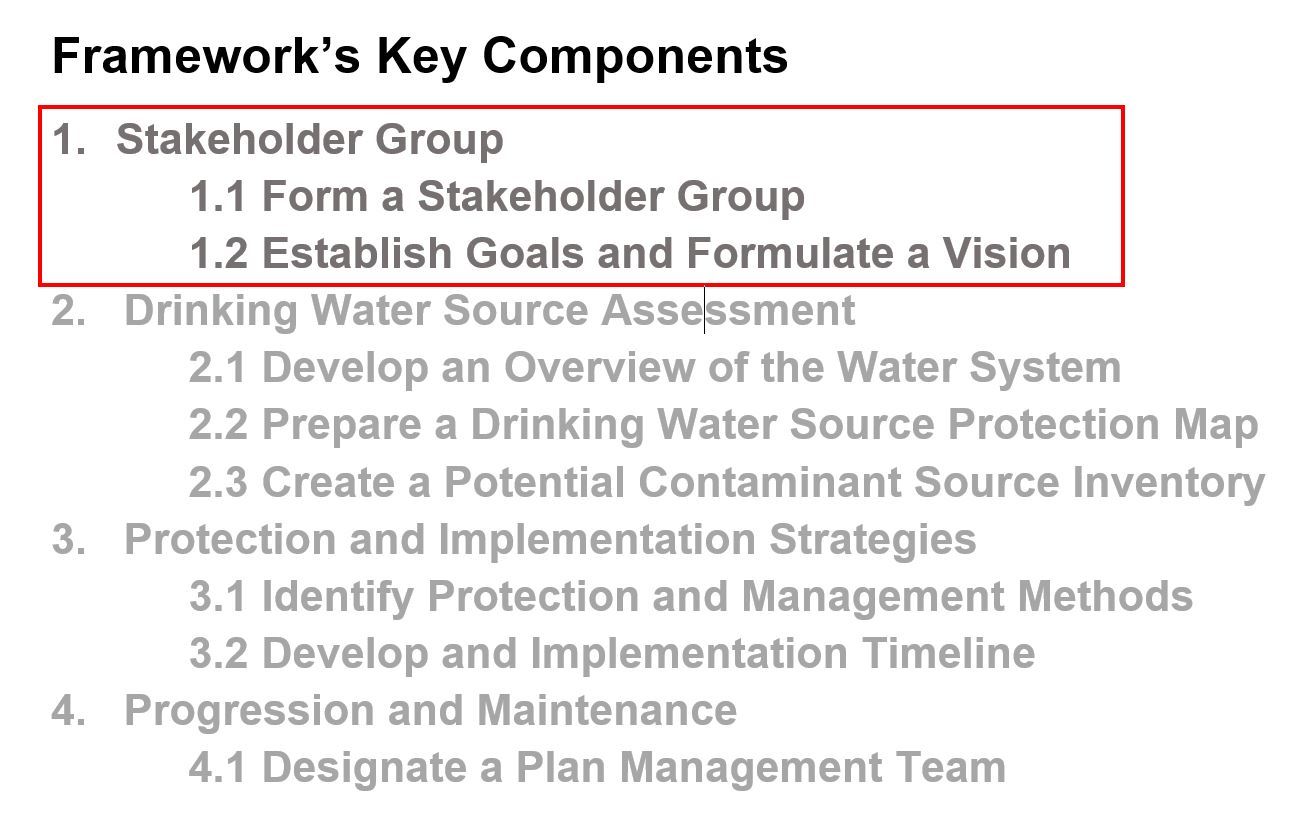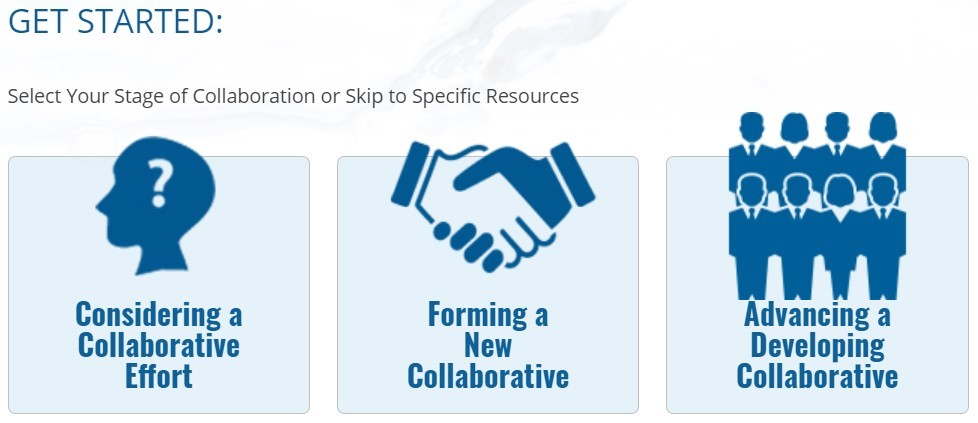Drinking Water Source Protection Program (DWSP2) - Monthly Newsletter
The New York State Department of Environmental Conservation sent this bulletin on 01/08/2021 12:01 PM EST |
| DEC Delivers - Information to keep you connected and informed from the NYS Department of Environmental Conservation |
| Share or view as a web page || Update preferences or unsubscribe |
Drinking Water Source Protection Program (DWSP2) - January NewsletterThis issue's topics:
|
|
Over the course of the next few newsletters, we will be taking a deeper dive into “A Framework for Creating a Drinking Water Source Protection Program Plan” as introduced in our previous issue. This will provide you with a synopsis of each of the four phases and eight key components of a protection plan. In this issue, we will start at the beginning with Phase 1 of the DWSP2 Framework: Stakeholder Group.
1.1 Form a Stakeholder GroupWhere do we start?“A Journey of a Thousand Miles Begins with a Single Step” Congratulations, you have taken the first step in deciding to develop a DWSP2 Plan to protect your drinking water source. While the Framework is meant to guide you through developing a plan, one of the most important parts is to assemble a group of knowledgeable and engaged members from the community that will ensure the plan suits the community and its needs. These people will be the plan’s stakeholder group and are the key to establishing, guiding, and implementing your community’s DWSP2 plan. Who should be involved in my Stakeholder Group?Look for those members in your community that represent important local interests and bring with them experience and knowledge that will contribute to a successful plan. Seek these people out and ask them to be involved in your stakeholder group. The Framework includes a list of possible stakeholders and a description of how they could benefit your plan. This list is not all-encompassing, and you may know of a group that is not listed but would be a good fit for your program. Invite them to participate as well! Another key thing is to make sure your stakeholder group is well balanced between the four basic categories listed in the Framework:
A screenshot from the first category in the Framework is included below: Another idea is to utilize an existing stakeholder group. Your community may already be working on a project and have stakeholders you think would be a great fit for the DWSP2 Plan. Using an existing stakeholder group has a number of advantages such as:
How else can I initiate partnerships for my Stakeholder Group?A starting point could be to reach out to your elected officials such as the Mayor to guide or participate in the selection of the stakeholder group. In addition to working with elected officials, the following list includes possible ways to connect with stakeholders:
The Source Water Collaborative is a publicly available toolkit you could use as you begin to reach out to potential stakeholders. The Collaborative is comprised of federal, state, and local partners whose focus is to further the goals of protecting sources of drinking water. It includes various tools and resources that could aid you as you go through the Framework. One such resource is the Collaboration Toolkit. This toolkit is meant to help others initiate or enhance partnerships to protect drinking water sources. A screenshot showing a few resources that can be found in Source Water Collaborative’s Collaboration Toolkit How to Engage My Stakeholder Group?Now that you have identified your stakeholder group, it is important to keep them engaged throughout plan development and implementation. One idea to get stakeholders together is to start with a common goal everyone might share. For example, are they interested in protecting or preserving water quality? Maybe they would like to prevent increased treatment costs or learn what area is important for source water protection efforts. The stakeholders may share one or all of these goals which could bring the group together for your DWSP2 Plan. Several resources can be used from the Source Water Collaborative or NOAA’s Office for Coastal Management to keep the group engaged such as:
1.2 Establish Goals and Formulate a VisionNow that you have established a stakeholder group, you can focus on establishing goals for the plan and formulating a vision. What should be the plan goal(s) and vision?The plan’s goals will guide actions that the community will take to protect their source of drinking water. They should be an indication of what the group hopes to accomplish with the plan. A good place to start would be to think about how to address existing priority issues related to the source water. Creating the plan’s goal is an opportunity to include actions that are forward-thinking. As you are discussing goals, you may begin to see a “call to action.” This could be used as the vision for your plan to guide its development and implementation of the protection plan. The Collaboration Toolkit includes items you may want to consider when developing your vision statement. What kind of examples could I look to?The Framework provides examples of goals and visions to get a community started. Or, in case you or the stakeholder group is stuck, we have a few examples below that may help you with community-specific goals and a vision. Goals:
Vision:
During our next edition we will be jumping into Phase 2: Drinking Water Source Assessment. This will introduce the technical aspects of developing a drinking water source protection program plan. Share Your ThoughtsHave you begun this process? Send in any helpful hints or lessons learned at source.water@dec.ny.gov and we may highlight them! Sign UpTo sign-up for the DWSP2 newsletter, visit the DWSP2 webpage or click here. Newsletter ArchiveMissed last month’s edition? Visit the DWSP2 Newsletter Archive to stay up to date. |



